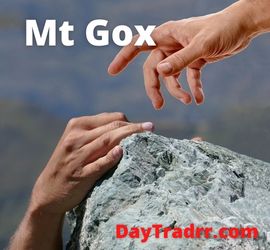Reverse Merger Advantages
Reverse mergers have advantages that make them attractive options for private companies. For example, it is a simplified way to go public and with less risk. The advantages include:
A reverse merger allows a private company to become public without raising capital. This considerably simplifies the process. Conventional IPOs can take months or even over a calendar year to materialize. However, reverse mergers can take only a few weeks to complete – in some cases, in as little as 30 days. This saves management time and energy, ensuring that there is sufficient time devoted to running the company.
Undergoing the conventional IPO process does not guarantee that the company will ultimately go public. Managers can spend hundreds of hours planning for a traditional IPO. But if stock market conditions become unfavorable to the proposed offering, the deal may be canceled. As a result, all of those hours will amount to a wasted effort. Pursuing a reverse merger minimizes this risk.
Less Dependence on Market Conditions
The traditional IPO combines both the go-public and capital-raising functions. A reverse merger is solely a mechanism to convert a private company into a public entity. Therefore, the process is less dependent on market conditions because the company is not proposing to raise capital. Since reverse mergers function solely as a conversion mechanism, market conditions have little bearing on the offering. Rather, the process is undertaken solely in an attempt to realize the benefits of being a public entity.
Benefits of a Public Company
Private companies—generally those with $100 million to several hundred million in revenue—are usually attracted to the prospect of going public. Once this happens, the company’s securities are traded on an exchange and enjoy greater liquidity. The original investors gain the ability to liquidate their holdings. This provides a convenient exit alternative to having the company buy back the shares. The company has greater access to capital markets. Also, management now has the option of issuing additional stock through secondary offerings. If stockholders possess warrants—the right to purchase additional stock at a pre-determined price—the exercise of these options provides additional capital infusion into the company.
Public companies often trade at higher multiples than private companies. Significantly increased liquidity means that both the general public and institutional investors (and large operational companies) have access to the company’s stock, which can drive its price. Management also has more strategic options to pursue growth, including mergers and acquisitions. As stewards of the acquiring company, management can use company stock as the currency with which to acquire target companies. Finally, because public shares are more liquid, management can use stock incentive plans in order to attract and retain employees. (Source: investopedia.com)
Reverse Merger Disadvantages
A reverse merger can be simpler, but it also requires adherence to regulations and due diligence to be successful.
Due Diligence Required
Managers must thoroughly vet the investors of the public shell company. What are their motivations for the merger? Have they done their homework to make sure the shell is clean and not tainted? Are there pending liabilities such as those stemming from litigation? If so, shareholders of the public shell may merely be looking for a new owner to take possession of these problems. Thus, appropriate due diligence should be conducted, and transparent disclosure should be expected from both parties.
Investors of the public shell should also conduct reasonable diligence on the private company, including its management, investors, operations, financials, and possible pending liabilities. Issues to watch include litigation, environmental problems, safety hazards, and labor issues.
Risky Stock May Be Dumped
The public shell’s investors may sell significant portions of their shares right after the merger. This can materially and negatively affect the stock price. To reduce or eliminate the risk that the stock will be dumped, clauses can be incorporated into a merger agreement, designating required holding periods.
No Demand for Shares Post Merger
After a private company executes a reverse merger, will its investors really obtain sufficient liquidity? Smaller companies may not be ready to be public companies. There may be a lack of operational and financial scale. Thus, smaller companies may not attract analyst coverage from Wall Street. After the reverse merger, the original investors may find little demand for their shares. Reverse mergers do not replace sound fundamentals. For a company’s shares to be attractive to prospective investors, the company itself should be attractive operationally and financially.
Regulatory and Compliance Burden
When a private company goes public, managers are often inexperienced in the additional regulatory and compliance requirements of being a publicly-traded company. These burdens, as well as costs in terms of time and money, can prove significant. The initial effort to comply with additional regulations can result in a stagnant and underperforming company. Especially if managers devote much more time to administrative concerns than to running the business.
To alleviate this risk, managers of the private company can partner with investors of the public shell who have experience in being officers and directors of a public company. The CEO can additionally hire employees (and outside consultants) with relevant compliance experience. Managers should ensure that the company has the administrative infrastructure, resources, road map, and cultural discipline to meet these new requirements after a reverse merger. As in all merger deals, the risk goes both ways. Both managers of the company and investors need to conduct due diligence. (Source: ibid)
Reverse Mergers: Real-Life Examples
Berkshire Hathaway
There are several notorious cases in which companies involved in a reverse merger went on to huge success. A stellar example involves Warren Buffet. He took his investment firm Berkshire Hathaway public through a reverse merger. Buffet acquired the textile manufacturing company, Berkshire Hathaway, in 1965. He later liquidated the company’s textile offering and merged it with his already existing conglomerate gaining the prestigious name his firm has today.
Burger King
Another famous example of a reverse merger is Burger King. Burger King Worldwide Holdings Inc. is a hospitality services chain that serves burgers in its restaurants. In 2012, they executed a reverse takeover transaction involving a publicly listed shell company called ‘Justice Holdings’. The shell company was co-founded by the famous hedge-fund veteran Bill Ackman. Once acquired by Burger King, the result is the company we know today.
Due Diligence and Red Flags
An instance of an unlawful reverse merger happened during the financial crisis in 2008. Many Chinese companies sought to enter the U.S. markets via reverse mergers. Mergers were commonly set up with abandoned companies that were still listed on stock exchanges. Ultimately, it turned out these companies experienced revenues far less than claimed. In some cases, the revenues barely existed at all. Based on these wrong filings, investors heavily invested in these companies. As a result, it has been estimated that investors probably lost tens of billions of dollars by investing in these firms. This example shows how a reverse merger can be misused for fraudulent activities.
(Source: bspeclub.com)
Day trading can be summarized simply as buying security. Then, quickly selling or closing out the position within a single trading day. Ideally, a day trader wants to “cash-out” by the end of each day with no open positions to avoid the risk of losses by holding security overnight. Day trading is not for everyone and carries significant risks. It requires an in-depth understanding of how the markets work and various strategies for profiting in the short term. Short-term profits require a very different approach compared to traditional long-term, buy and hold investment strategies.
 A reverse merger occurs when a smaller private company becomes a public company by purchasing control of a larger public company. The shareholders of the private company usually receive large amounts of ownership in the public company and control of its board of directors. Once this is complete, the private and public companies merge into one publicly traded company.
A reverse merger occurs when a smaller private company becomes a public company by purchasing control of a larger public company. The shareholders of the private company usually receive large amounts of ownership in the public company and control of its board of directors. Once this is complete, the private and public companies merge into one publicly traded company.



